|
|
THE KAVANGO-KWANDO-ZAMBESI
"TRANSFRONTIER PARK":
Southern Africa 7 July 2003
Incorporating existing parks and conservation areas in Angola, Botswana, Namibia, Zambia and Zimbabwe.
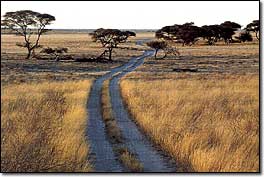
Kalahari Botswana
|
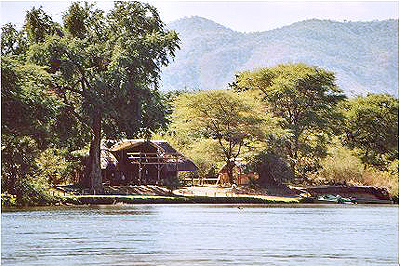
Camp Chiawa/Zambia
|
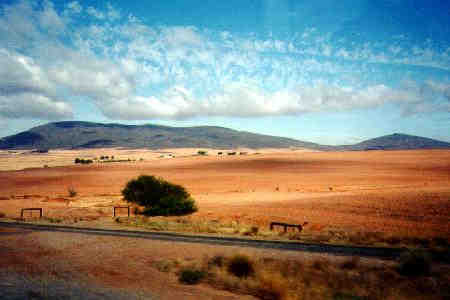
Kalahari Namibia
|
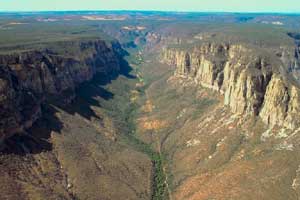
Canyon in Angola
|
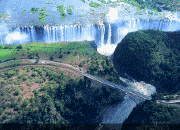
Zambia Falls
|
INTRODUCTION
The area surrounding the Okavango-, Kwando- and Zambezi Rivers, has been described as the "Eden of Africa" as long ago
as in the beginning of the previous century. Since then very little and very much has changed. Much has changed in this
sense that the areas has been carved up into 5 different countries and has experienced the scourges of war. Little has
changed in this sense that hardly any development has taken place and the border is often just a line drawn on a map -
still peoples and wildlife co-exist in harmony and trek across borders at will.
This amazing area varies from the "Thirstland" of the Kalahari Desert, to the amazing Okavango Swamps and the tropical
paradise around the world famous Victoria Falls. Large sections of this area has never been fully explored but more
than 500 species of birds have been listed. The animal kingdom is truly remarkable with Sable antelope, Roan antelope,
elephant, buffalo, hippopotamus and crocodile in abundance.
The oldest living human inhabitants date back to more than 80,000 years ago. When the "Abantu" settlers moved into
this area round about 1750, they found small families of Khoi-Khoi, the Bushmen, living there. Today you still find
groups of! Khûng and Khoé Bushmen living as hunter-gatherers amongst the Abantu tribes in obvious peace.
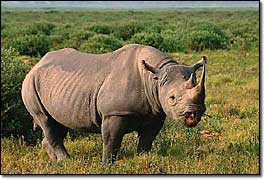
Botswana
|
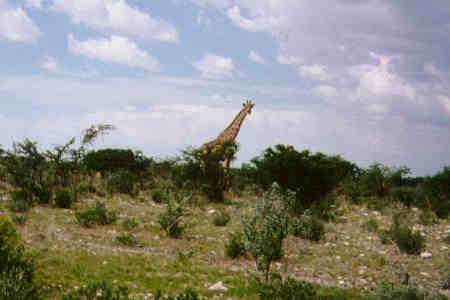
Namibia
|

Botswana
|

Botswana
|
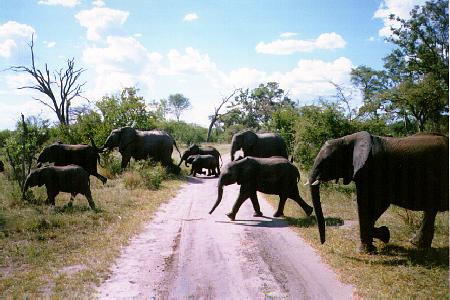
Zimbabwe
|
DEVELOPMENT
During the years, the various governments established conservation areas here. Amongst them are:
- Coutada Publica do Mocusso and the Coutada Publica do Luengué in Angola.
- Moremi Wildlife Reserve and Chobe National Park in Botswana.
- Kaudom-, Caprivi-, Manage- and Mudumo National Parks in Namibia.
- Sioma Ngwezi National Park in Zambia.
- Zambezi-, Kazuma Pan- and Hwange National Parks in Zimbabwe.
A few major towns have developed in this area of which only Katima Mulilo in Namibia is in the center. Mavinga in Angola,
Ghanzi and Maun in Botswana, Rundu in Namibia, Livingstone in Zambia and Victoria Falls in Zimbabwe, are all more or
less on the border of this proposed Park. There are a few tarmac roads in this area, some electrical networks especially
towards the major town and naturally communications networks. For the rest, it is just one huge unspoilt and undeveloped
hinterland with small informal settlements where tribes-peoples eke out and existence-farming, often in symbioses with
the wildlife.
The area that is part of Angola, is now in the process of negotiating peace after so many years of war but it is still
very unstable with uncontrolled groups of armed bandits roaming around. The wildlife has been hunted down to the point
of near-extinction and there are plenty of landmines and other un-accounted for weapons. Yet peace is coming and slowly
things are returning back to normal. The animals are again returning to their traditional feeding areas and the refugees
are returning to the "lands of the fathers" and settling into a life that they have lived for millennia.
INVOLVEMENT
Koos Greeff from South Africa has been actively involved with the hospitality industry since 1977 and with social
development work since 1984. During that time he started visiting groups of refugees from the civil war in Angola,
trying to assist them in any way. In 1989 with a group he started a non-governmental development trust with the
explicit purpose of working in the areas of northern Namibia. By 2000 a huge refugee camp was established at "Osire"
about 200-km northeast of Windhoek, the capital of Namibia. At times there were more than 25,000 refugees living there.
They helped them to form some sort of leadership structure and then initiated training sessions every month. The
idea of these sessions was to empower them to help their own people’s country. Koos personally visited "Osire" three
times to handle such training sessions.
During September 2001, the group met a group of leaders from the Okavango region for a planning session. The idea of
this proposed Transfrontier Park was born there. The initial idea was to establish, in association with local
communities, sites for the building of tourist camps. The role of Koos' group would be to help with the planning,
the know-how for the initial construction and the marketing of these "tribal tourist camps". They felt that Eco-tourism
is the route must go, thus they must build camps run by the local communities and incorporating their cultures and
traditions in the whole operation of the camps.
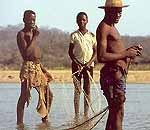
Botswana
|
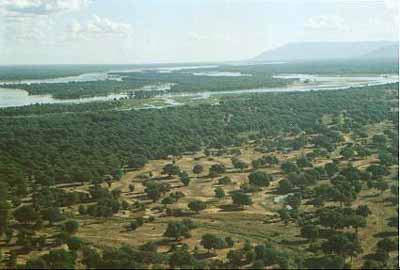
Zambia
|
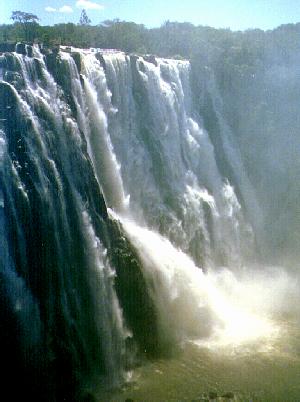
Zimzam
|
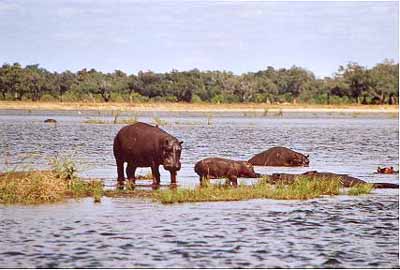
Zambia
|
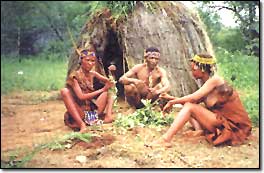
Asarwa
|
THE PLAN
The idea at present is to incorporate as large an area as possible and to establish a free roaming area for animal
and tourists in this area. The group would also try to incorporate as many as possible of existing settlements and
communities into the running of this park. Great effort will have to be made to establish sustainable, co-existing
industries and farming enterprises so as to not prevent the local inhabitants from living a decent human life. This
sort of peaceful co-existence between man and wildlife is possible as is the example of Kenya and Tanzania. As this
has been the lifestyle of this area for so many millennia, the group is confident that with the right imput from
governments and international societies, they could establish such an "Eden" again. This would not only benefit the
local inhabitants of this area, but also all of mankind for the ages to come.
The idea is to start preliminary negotiations with all the local communities living in these areas. Only after the
group has their active co-operation and imput, they can do a proper assessment of the problems, needs and potential
of this huge area. After proper research, an initial development plan can be put together. This must be taken back
to the local peoples. With their approval, the group could then start negotiations with the different governments.
This would necessitate more research, negotiations and planning’s before implementation. Koos would like to stress
this important point, that the key to the success of this park, lies completely in the hands of the communities
inhabiting the area – without their complete approval and co-operation, the Park is doomed to strife and destruction
and one of the truly "wild" areas of Africa, will be lost for ever.
The base for starting this park would initially be to town of Rundu in northern Namibia as it has the necessary
infrastructure. The development of the Park will be done in phases. Initially it would be advisable to incorporate
only the three parks in Namibia with those of Angola. This would constitute the biggest area with the lowest
concentration of people. The settlement of Bagani would then be the center of the Park as Bagani has a good runway
and the necessary infrastructure. For a second phase, the area in Zambia and those in Botswana could be incorporated.
The third phase would be to incorporate existing tribal lands or other freehold lands into the Park. Lastly the parks
in Zimbabwe could be incorporated. The existing parks there have good infrastructures but at present, the regime in
Zimbabwe does not allow for international support. At the final phase, the town of Katima Mulilo in Namibia would be
the center of the Park. The necessary operational offices would then be moved there as at present the town already
boasts a well-developed infrastructure.
RESPONSE - REMARKS - SUGGESTIONS
Mr. Koos Greeff
P.O. Box 62
Klawer 8145
South Africa.
Phone and Fax: +27 – 2721 – 6107
Cell: +27 – 83 – 6515686
E-mail Kosie@new.co.za
|
|